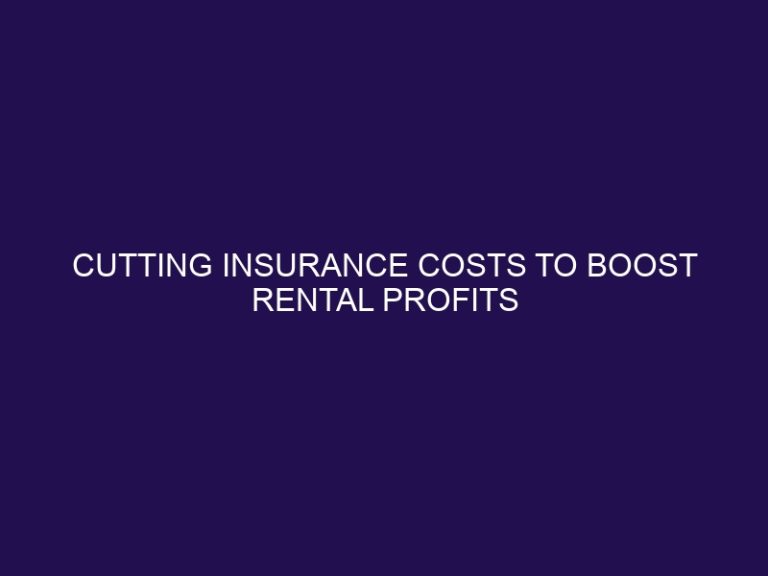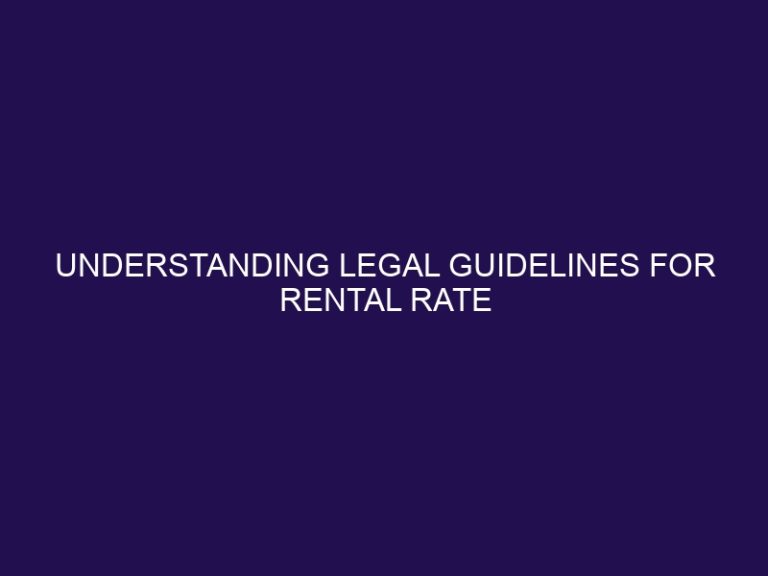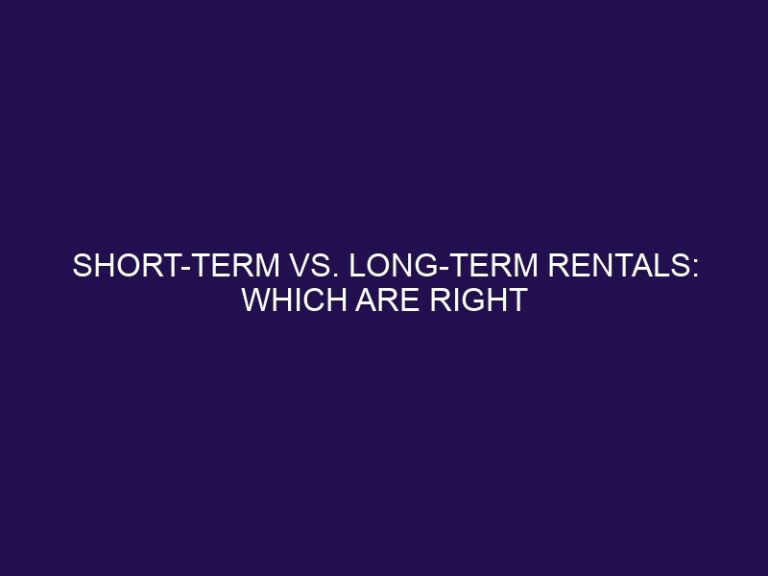Top Tips for Landscaping Your Investment Property
Investment properties are a valuable asset for any property owner, and landscaping can play a crucial role in maintaining and increasing its value. Landscaping not only enhances the overall appearance of the property, but it also offers numerous benefits for both the owner and potential tenants. In fact, a study by the National Association of Realtors found that 63% of potential buyers were more likely to buy a home if it had a well-landscaped lawn.
But, what exactly makes landscaping so important for investment properties? According to experts, a well-maintained landscape can have a significant impact on the property’s value, attractiveness, and overall maintenance costs. It also creates a positive first impression for potential tenants. Professional landscapers from Green Impressions Landscaping highlight some top benefits of landscaping for investment properties.
- Increases Property Value: A beautifully landscaped property can increase its value by as much as 12%, making it a worthwhile investment for property owners.
- Attracts Potential Tenants: A well-maintained landscape can make a property more appealing to potential tenants, increasing the chances of a higher rental price and quicker occupancy.
- Reduces Maintenance Costs: Properly designed and maintained landscapes can reduce maintenance costs in the long run, saving property owners time and money.
- Improves Curb Appeal: A visually appealing landscape can improve the overall curb appeal of the property, making it more desirable for tenants and potential buyers.
To achieve these benefits, investing in essential elements of landscaping is crucial. These include lawn care and maintenance, plant selection and placement, hardscaping features, and outdoor lighting. When creating a budget for landscaping, it is important to research the cost of materials and labor, prioritize essential features, and consider long-term maintenance costs. Some landscaping ideas for investment properties include low-maintenance and drought-resistant landscaping, outdoor entertainment spaces, and incorporating sustainable features. By following these tips, property owners can effectively increase the value and desirability of their investment properties.
Key Takeaways:
Why is Landscaping Important for Investment Properties?
Why is Landscaping Important for Investment Properties? Landscaping not only enhances curb appeal, but it also attracts quality tenants and boosts property value. A well-maintained yard can justify higher rental rates and reduce vacancies, making it a valuable investment. Additionally, it significantly improves the overall aesthetics of the property, creating a positive first impression for potential tenants.
What Are the Top Benefits of Landscaping for Investment Properties?
Landscaping is a crucial aspect of maintaining and enhancing the value of an investment property. Beyond just adding aesthetic appeal, proper landscaping can have numerous benefits for property owners. In this section, we will discuss the top benefits of landscaping for investment properties, including how it increases property value, attracts potential tenants, reduces maintenance costs, and improves curb appeal. These tips will help you make the most out of your investment property and attract long-term, high-quality tenants.
1. Increases Property Value
- Enhance Curb Appeal: Maintain well-groomed lawns and vibrant plantings to increase property value.
- Upgrade Outdoor Spaces: Add functional and aesthetically pleasing features to enhance property value.
- Professional Maintenance: Regular lawn care and strategic plant selection can also contribute to increasing property value.
- Energy-Efficient Lighting: Install outdoor lighting for added security, ambiance, and to boost property value.
2. Attracts Potential Tenants
- Enhance curb appeal to attract potential tenants and make a great first impression.
- Use colorful and well-maintained landscaping to create an inviting atmosphere that will catch the attention of potential tenants.
- Include amenities such as seating areas or outdoor kitchens to further attract tenants and make the property more appealing.
3. Reduces Maintenance Costs
- Regular Maintenance: Scheduling routine lawn care and plant upkeep can greatly reduce maintenance costs and prevent costly overgrowth or damage.
- Water-Efficient Design: Opting for drought-resistant plants and implementing efficient irrigation systems can help minimize water usage and expenses.
- Durable Materials: Choosing long-lasting hardscaping features and outdoor lighting can significantly reduce repair and replacement costs.
4. Improves Curb Appeal
- Enhance Front Yard: Maintain a well-manicured lawn and add colorful plants to improve curb appeal.
- Clean Exterior: Power wash pathways, driveways, and the property’s exterior to enhance curb appeal.
- Upgrade Entryway: Install eye-catching door hardware and fresh lighting fixtures to improve curb appeal.
- Repair Structures: Fix any visible cracks, chips, or damages in the driveway, walkways, or walls to improve curb appeal.
What Are the Essential Elements of Landscaping for Investment Properties?
When it comes to increasing the value of an investment property, landscaping plays a crucial role. But what exactly should be included in a well-designed landscape for an investment property? In this section, we’ll discuss the essential elements that every investor should consider when landscaping their property. From proper lawn care and maintenance to strategic plant selection and placement, as well as incorporating hardscaping features and outdoor lighting, these tips will help you create a visually appealing and valuable outdoor space.
1. Lawn Care and Maintenance
- Regularly mow the lawn to maintain a neat and tidy appearance.
- Deeply water the grass but do so infrequently in order to promote deep root growth.
- Provide essential nutrients for healthy growth by fertilizing the lawn.
- Aerate the soil to allow for proper penetration of air, water, and nutrients to the roots.
- Prevent damage to the lawn by controlling weeds and pests.
After implementing a strict lawn care and maintenance regimen, the value of the property significantly increased, attracting new tenants and reducing maintenance costs.
2. Plant Selection and Placement
- Assess property sunlight and soil conditions.
- Choose native plants for easy maintenance and proper placement.
- Consider plant height and growth for visual balance.
- Factor in seasonal variations for year-round appeal.
Incorporating well-suited plants enhances the property’s aesthetic while minimizing upkeep costs.
3. Hardscaping Features
Hardscaping elements for investment properties include patios, walkways, retaining walls, and driveways. These features not only add to the functionality of the property but also enhance its aesthetics, making it more appealing to potential tenants and ultimately increasing its value as an investment.
4. Outdoor Lighting
- Assess the layout of the property to determine the best placement for outdoor lighting.
- Select energy-efficient lighting fixtures to minimize operational costs in the long run.
- Prioritize safety and security by illuminating pathways, entryways, and dark corners.
- Incorporate lighting to showcase key landscaping features and improve the overall curb appeal.
How to Create a Budget for Landscaping Your Investment Property?
As a property investor, creating a budget for landscaping your investment property is crucial for maximizing your return on investment. In this section, we will discuss the key factors to consider when creating a budget for your landscaping project. From researching the cost of materials and labor to prioritizing essential features, we’ll provide practical tips to help you stay within your budget without compromising on the overall quality and aesthetic of your property. We will also touch upon the importance of considering long-term maintenance costs to ensure a sustainable and profitable investment.
1. Research Cost of Materials and Labor
- Conduct thorough research on the current market prices of landscaping materials and labor.
- Obtain quotes from multiple suppliers and contractors to ensure competitive pricing.
- Take into consideration the quality and durability of materials to accurately assess their long-term value.
2. Prioritize Essential Features
- Assess property needs and goals for landscaping.
- Prioritize Essential Features for property value enhancement.
- Consider maintenance requirements and long-term benefits.
- Research local market preferences and trends for property appeal.
Landscaping can increase property value by up to 20%.
3. Consider Long-term Maintenance Costs
- Evaluate ongoing maintenance needs
- Estimate costs for regular upkeep
- Consider Long-term Maintenance Costs
- Plan for periodic replacements or upgrades
What Are Some Landscaping Ideas for Investment Properties?
When it comes to investment properties, first impressions are crucial. A well-landscaped property can not only increase its value, but also attract potential tenants or buyers. In this section, we will explore some creative landscaping ideas specifically tailored for investment properties. From low-maintenance designs to eco-friendly features, these tips will help you create a beautiful and desirable outdoor space that will make your property stand out from the rest.
1. Low-Maintenance Landscaping
- Select native plants that require minimal care
- Incorporate automated irrigation systems
- Utilize mulch for weed control and moisture retention
- Choose durable materials for hardscaping
2. Drought-Resistant Landscaping
- Choose native drought-resistant plants like lavender, yarrow, or ornamental grasses.
- Implement efficient irrigation systems such as drip irrigation or soaker hoses.
- Use mulch to retain soil moisture and suppress weed growth.
- Consider incorporating hardscaping elements like gravel pathways to reduce water usage.
3. Outdoor Entertainment Spaces
- Evaluate the outdoor space that is available and its potential uses.
- Think about adding a patio or deck for social gatherings.
- Include amenities such as grilling stations or fire pits.
- Incorporate comfortable seating and greenery to create a welcoming ambiance.
A property owner successfully transformed a bare backyard into a beautiful outdoor entertainment area, drawing in more tenants and increasing the demand for rentals.
4. Incorporating Sustainable Features
- Install rain barrels to collect water for irrigation
- Use native plants to reduce water usage and maintenance
- Incorporate permeable paving to reduce runoff and erosion
- Utilize solar-powered outdoor lighting
Did you know that incorporating sustainable features, such as those listed above, can reduce water consumption by up to 50%?
Frequently Asked Questions
1. What are some tips for maintaining an attractive property during the summer months?
During the hottest part of the day, it’s best to avoid doing any strenuous landscaping tasks. Instead, focus on basic property maintenance such as watering in the early morning or evening, removing debris, and checking for any potential hazards like dangling or dangerous limbs.
2. How can landscaping make my investment property more appealing to potential renters or buyers?
A well-maintained and visually appealing landscape can greatly enhance the curb appeal of your property. This can make a strong first impression on potential renters or buyers and increase the overall value of your investment.
3. What are some low maintenance landscaping options for investment properties?
Choose plants that are native to the area and can withstand the local climate, as they will require less care. Additionally, consider installing sprinkler systems for efficient watering and using organic fertilizers to minimize ongoing costs.
4. How can I prepare my rental property for the winter months?
Before the weather cools down, make sure to trim back any hedges or shrubs, shut down any outdoor amenities such as sprinkler systems, and clean and maintain outdoor furniture. If necessary, consult a lawn care professional for help with winterizing your landscape.
5. What should I do if I have current renters in my investment property?
Make sure to communicate with your renters about any landscaping plans and schedule regular maintenance tasks such as mowing and watering. Additionally, consider involving them in the upkeep by providing a compost bin or rain showers for watering.
6. How can I find trustworthy tenants for my investment property?
When selecting tenants, consider their previous rental history, credit score, and references. You can also ask about their interest in helping with basic property maintenance tasks such as mowing and watering, which can be a sign of responsible and reliable tenants.







